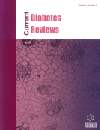
Full text loading...
We use cookies to track usage and preferences.I Understand
Diabetic foot wounds and infections pose a significant and evolving challenge in diabetes care. Diabetic wound healing has become a major global concern for a very long time. Continuous research has been conducted to increase the healing process in diabetic ulcers to the rate of amputation. Wound healing is prolonged in diabetic patients due to various conditions, such as high glucose levels, neuropathy, poor blood circulation, and prolonged inflammation around the limbs, which causes the healing to be delayed compared to normal patients. Understanding the complexity of chronic foot wounds and the management and proper treatment would lead to a decrease in the risk of amputation. The medical team all over the world is constantly researching to lower the risk.
This review paper offers a compelling journey through the multifaceted world of diabetic foot wounds and infections. It underscores the urgency of understanding classification, tackling multidrug resistance, and harnessing microbial insights to revolutionize the treatment and management of diabetic foot complications. Furthermore, it unveils state-of-the-art diagnostics, heralding a brighter future in the battle against this debilitating complication of diabetes.

Article metrics loading...

Full text loading...
References


Data & Media loading...

